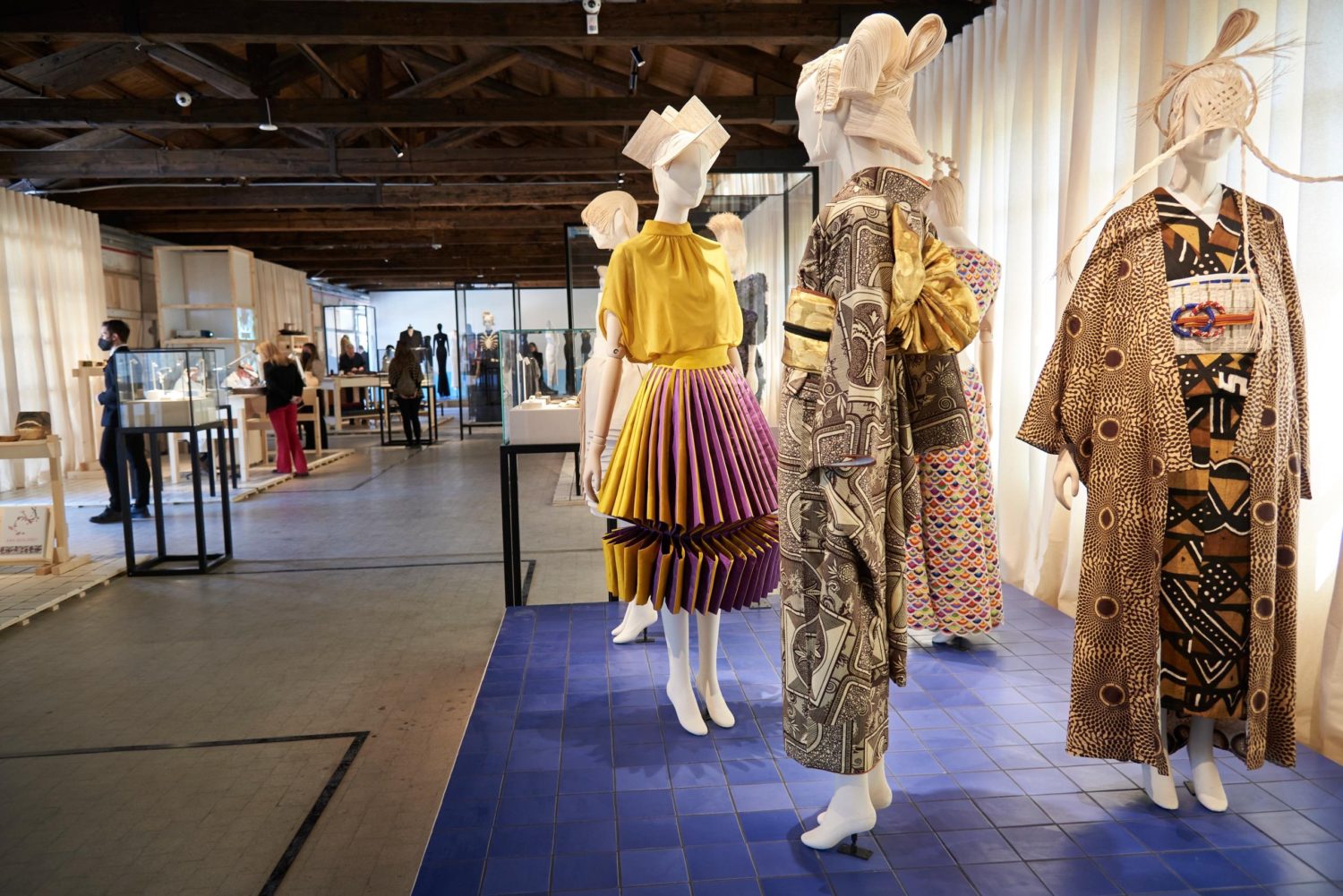Top photo: Chloé, Details Genealogies of Ornament, Lola Moser ©Michelangelo Foundation
It takes a boat ride across the pale turquoise water of the lagoon to reach this year’s large Homo Faber exhibition on the island of San Giorgio, five minutes from the Piazza di San Marco, at Fondazione Giorgio Cini. For more than a thousand years, these beautiful rooms and gardens served as a monastery, and they still possess a sublime sense of monastic calm.
Michelangelo Foundation, which in recent years has been supporting the preservation and development of crafts throughout Europe chose carefully when it selected this almost otherworldly place as the site of the recurring event. Homo Faber is billed as an exhibition but is really a unique mix of festival, total installation and excursion destination – naturally, complete with excellent culinary offerings. The individual exhibitions are distributed throughout the sprawling monastic complex, and just as in Venice in general, visitors need to wander round the labyrinth to see what they may discover.
The setting adds to the magic, and slightly disoriented but with freshly alerted senses, one is confronted with a wealth of new aspects of contemporary crafts, surrounded by swooping pigeons and the intense fragrance of lilacs. The audience included every age group, with a surprisingly even distribution between the sexes and a disproportionate number of visitors from Italy and France – on an ordinary Wednesday in Venice.
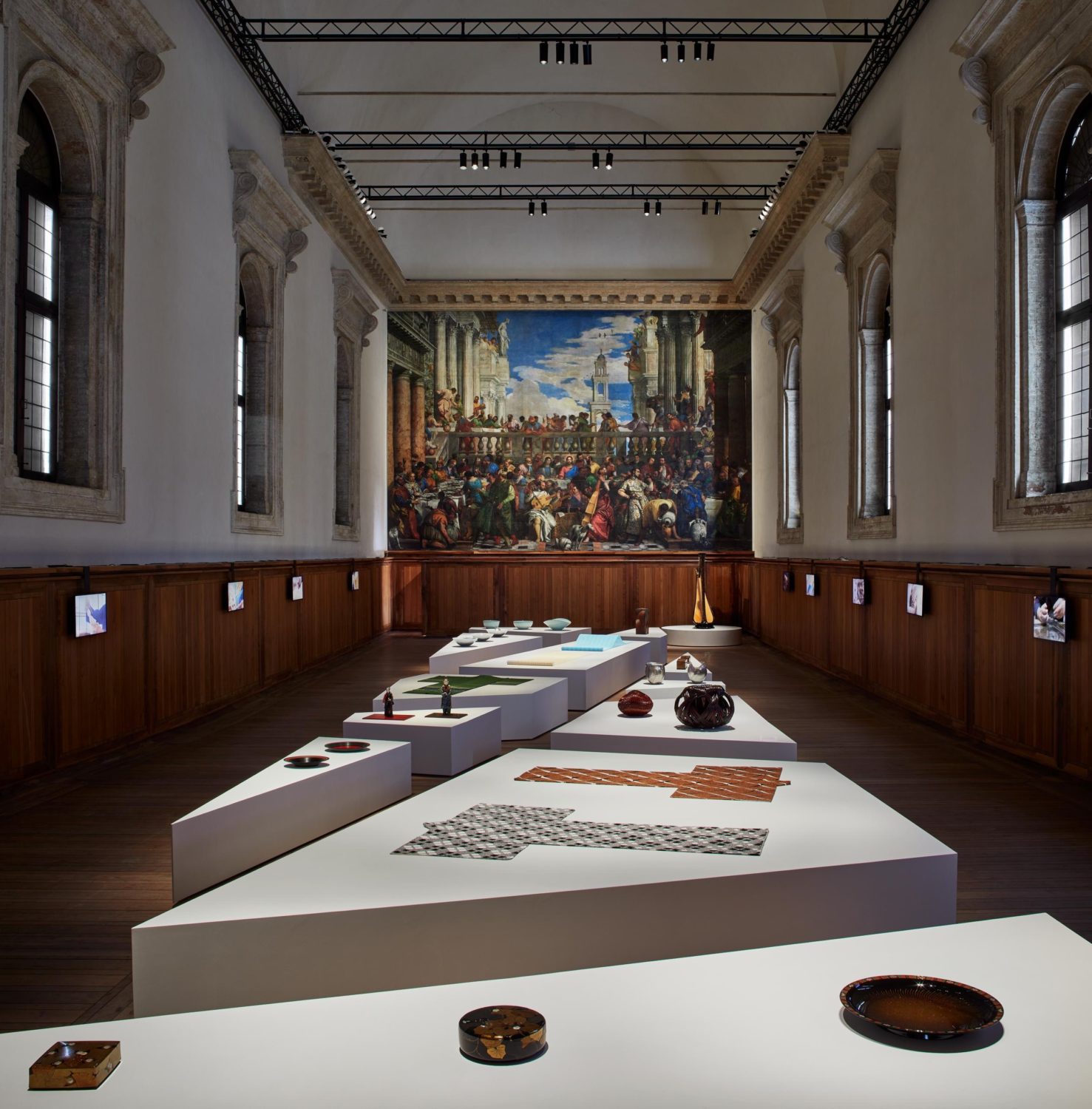
National living treasures
In one of the large halls, the exhibition was enveloped in gentle harp music. The back wall featured Veronese’s mural of the wedding at Cana, the exhibits were orderly distributed on large, low plinths, the light was soft and muted. The harp was itself one of the exhibits. Here, Italy and Japan met in a shared tradition for exquisite craftsmanship: twelve of Japan’s so-called national living treasures had been invited to present a small selection of works under the title 12 Stone Garden, a reference to the Japanese tradition for sublimated gardens.
Just inside the room, there was a display of Kazumi Murose’s maki-e lacquerware boxes. The enigmatic sheen of the mother-of-pearl inlay could not be captured by camera, almost like a starry sky, which can only truly be appreciated with the naked eye. Among the exhibits were ceramics with celadon and enamel glazes, kimonos with hand-printed geometric patterns, amazing woven bamboo baskets. Screens mounted on the walls showed the masters at work. Many of the 12 ‘treasures’ speak of their work as a spiritual practice, where they become one with the material.
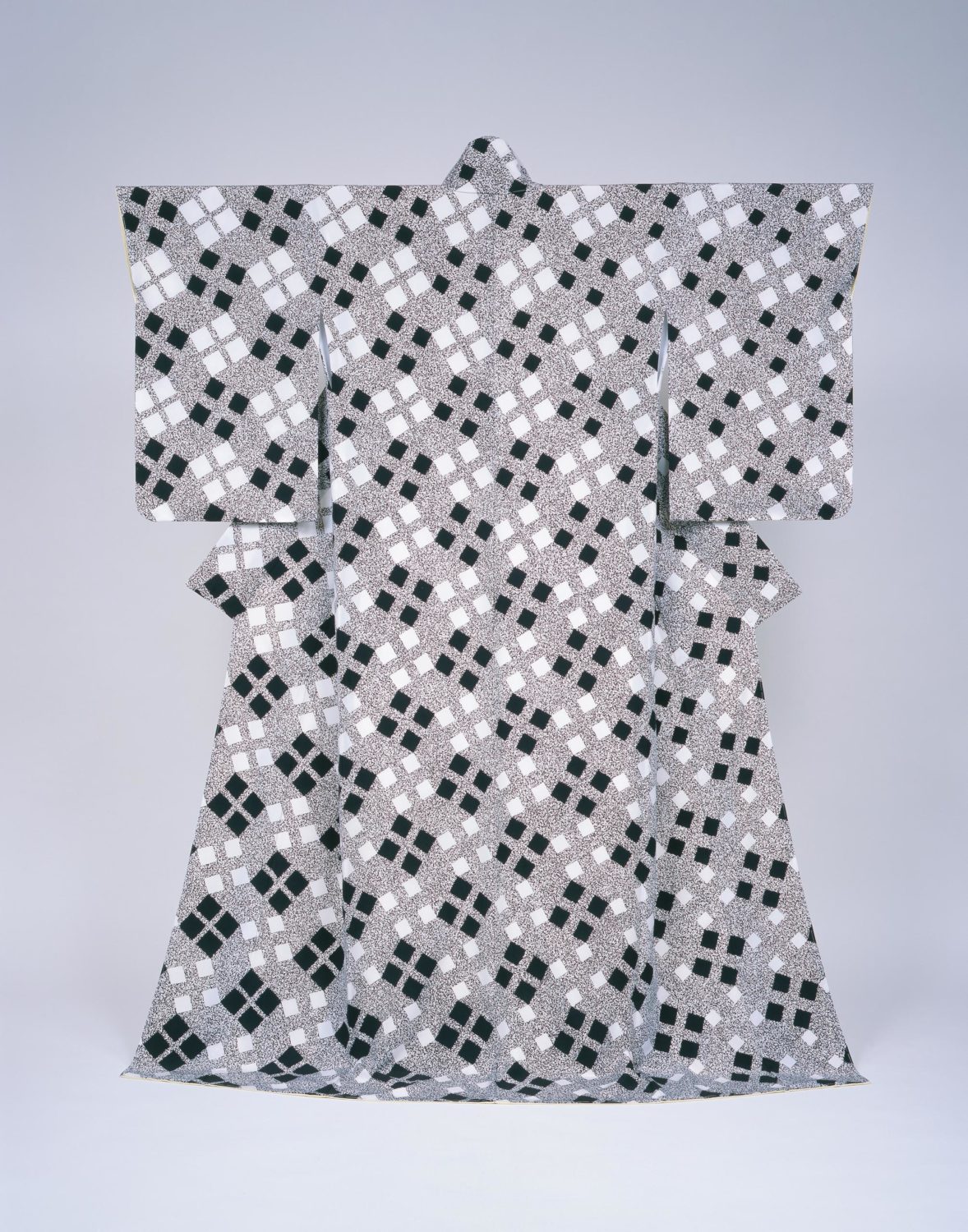
Almost like a mirror, the exhibition directly below, Marvellous Liaisons, was dedicated to the reception of Japanese crafts in Italy, which for centuries has been absorbing both techniques and themes. Venice has always been a gateway to the Orient, so it is no wonder that local makers and artisans to this day remain fascinated with squids or create bonsai trees in glass, screens with geometric patterns in gold and mirrors with kakiemon flower decorations, all of it translated into a very Italian aesthetic with a much wider range of colours and greater complexity.
Next of Europe
Colours and complexity also characterized the main exhibition, Next of Europe, a sumptuous cabinet of curiosities full of everything that is going on in European crafts today, from the minimalist to the organic to whole-hearted maximalist aesthetic. Here, many makers fearlessly moved far away from the sublime Japanese simplicity that is also a prevalent feature in Scandinavian crafts and design.
One particular theme seemed to be the revitalization of otherwise extinct luxury objects, such as fans, passementerie, music boxes, humidors and conversation pieces beautifully manifested in exquisite materials. Among the exhibits, the audience could see the makers at work in small workshops and hear more about their respective fields.
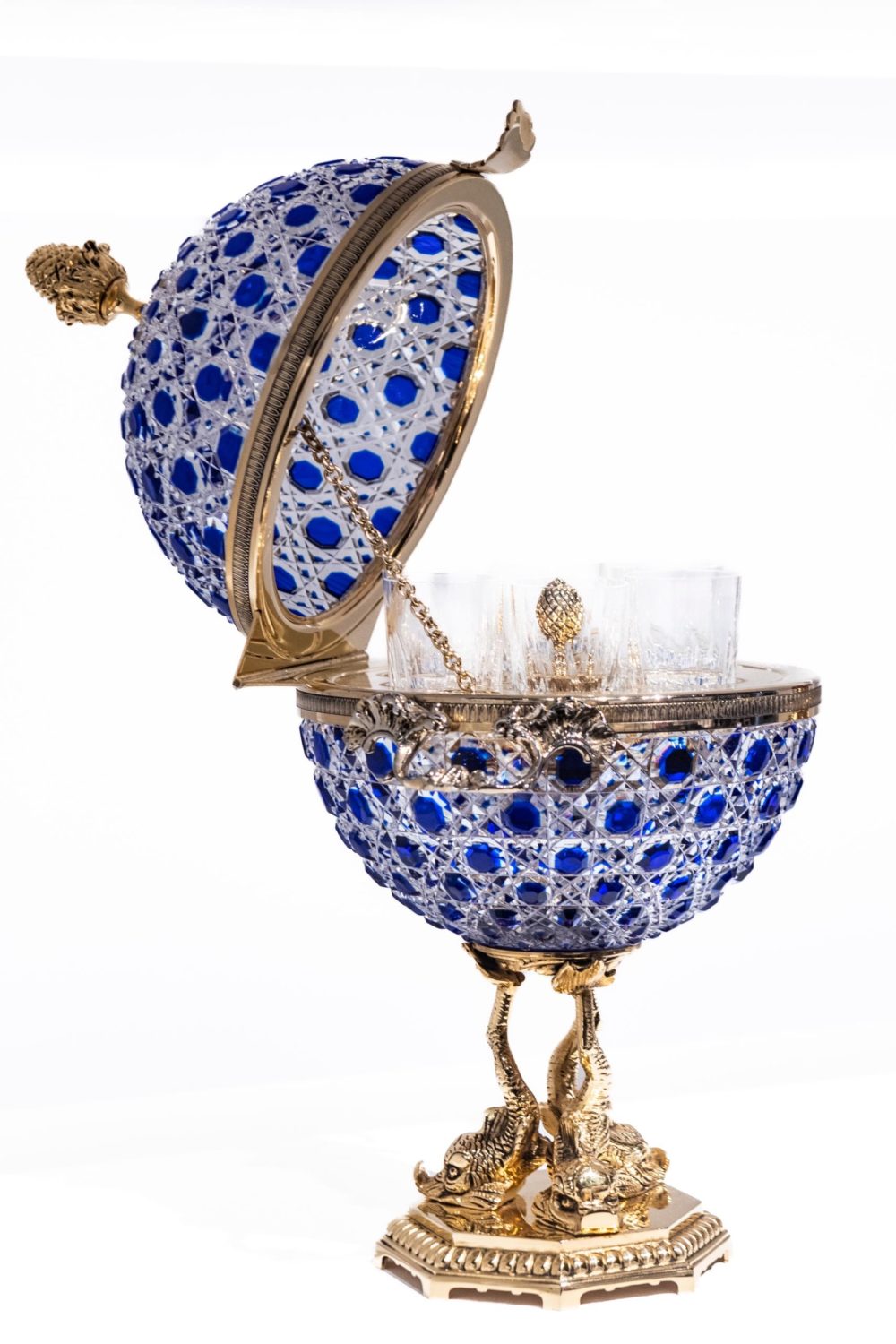
There were also spiky vases in thixotropic silicone, long leather gloves decorated with leather birds taking to the wing, a cabinet with doors in epoxy resin decorated with floral collages. Ooh, but can you do that, isn’t it too much? the Scandinavian instinctively wonders. Things can seem like drama queens. When their statement power is enhanced, they demand more space and insist on our commitment. Things become attention-seeking.
But might there not in fact be something slightly troubling about the Nordic need for quiet spaces and muted objects; doesn’t it almost resemble social anxiety? Continental Europe has never shared the Nordic sense of discomfort with fully saturated, maximalist spaces where a person can lose themself in a comprehensively staged universe.
Cool abstraction, tradition and deconstruction
The Danish contributions covered the range of trends: Karin Mørch’s and Steen Ipsen’s sculptures in glass and ceramic position themselves in a Nordic tradition for cool abstraction, Maja Frendrup’s and Morten Klitgaard’s organic ceramics are rooted in tradition, while Stine Bidstrup’s glass and Bettina Schori’s lamps, in slightly less typical fashion, deconstruct and reconstruct classic elements with a nod to the grotesque.
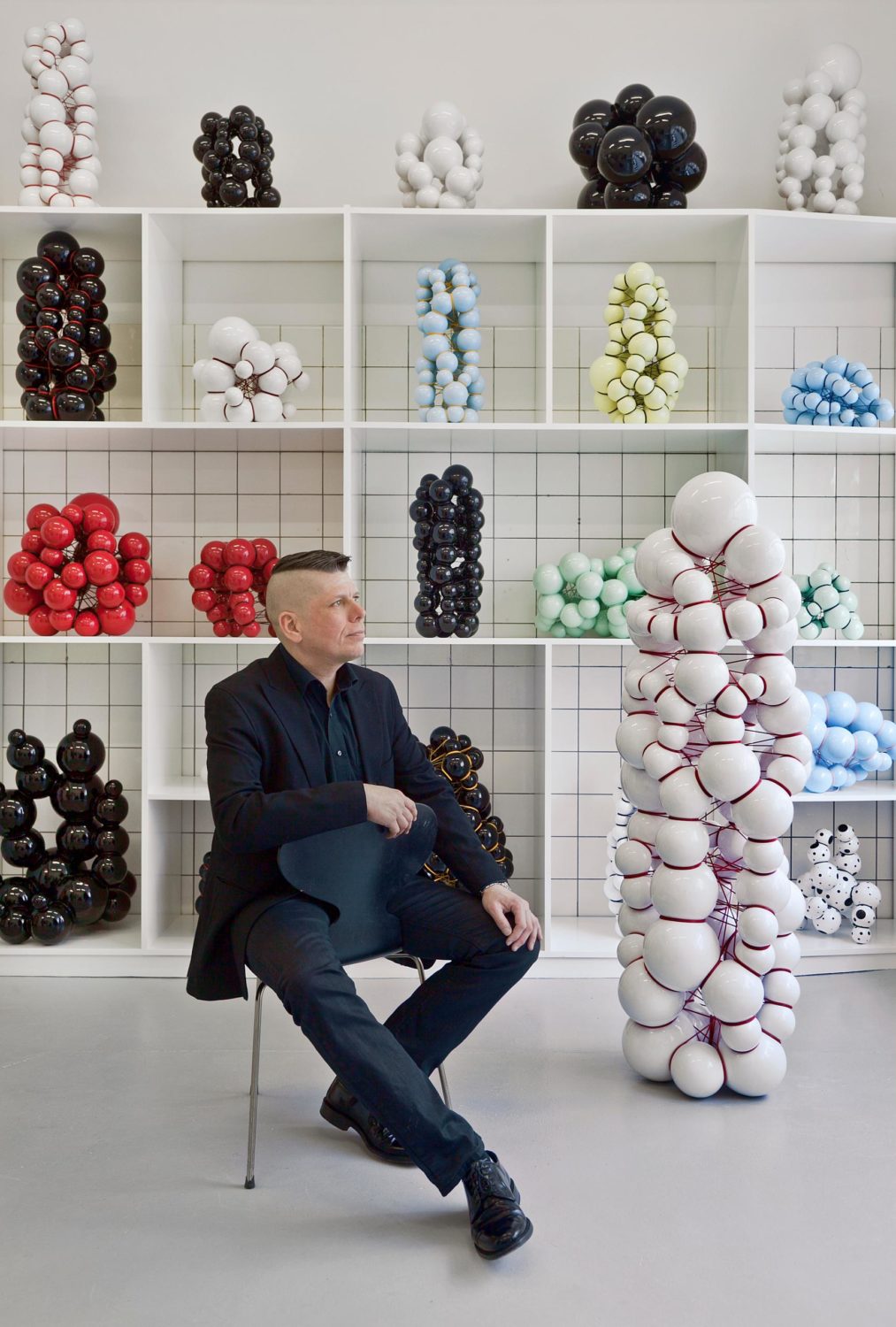
Diversity, ritual transformation and sensuous experiences
Michelangelo Foundation have clearly made it their project to reflect the totality of craft expressions and possibilities rather than prescribing a mandated version of good taste.
However, staging and minimalism are not mutually exclusive. The prologue to playwright Robert Wilson’s contribution, Waiting in peace and darkness, was a short journey of discovery in black and white: visitors had to crouch down to go through a low gate into a cool room covered in white pebbles and from there into a room as black as darkest night.
In a ritual transformation, the observer is reset, the eyes are made ready. Small display cases along a narrow black corridor presented all-white objects: fragile porcelain bowls, white flowers, photos of deformed Chinese ‘lotus feet’. The general exhibition’s meditation on the themes in the opera Madame Butterfly showed that calm, ceremonial objects can be extremely dramatic. Wilson’s large headgear and necklaces made of thin metal rods thus not only make the body appear fuller but also make it inapproachable – without making it weightier.
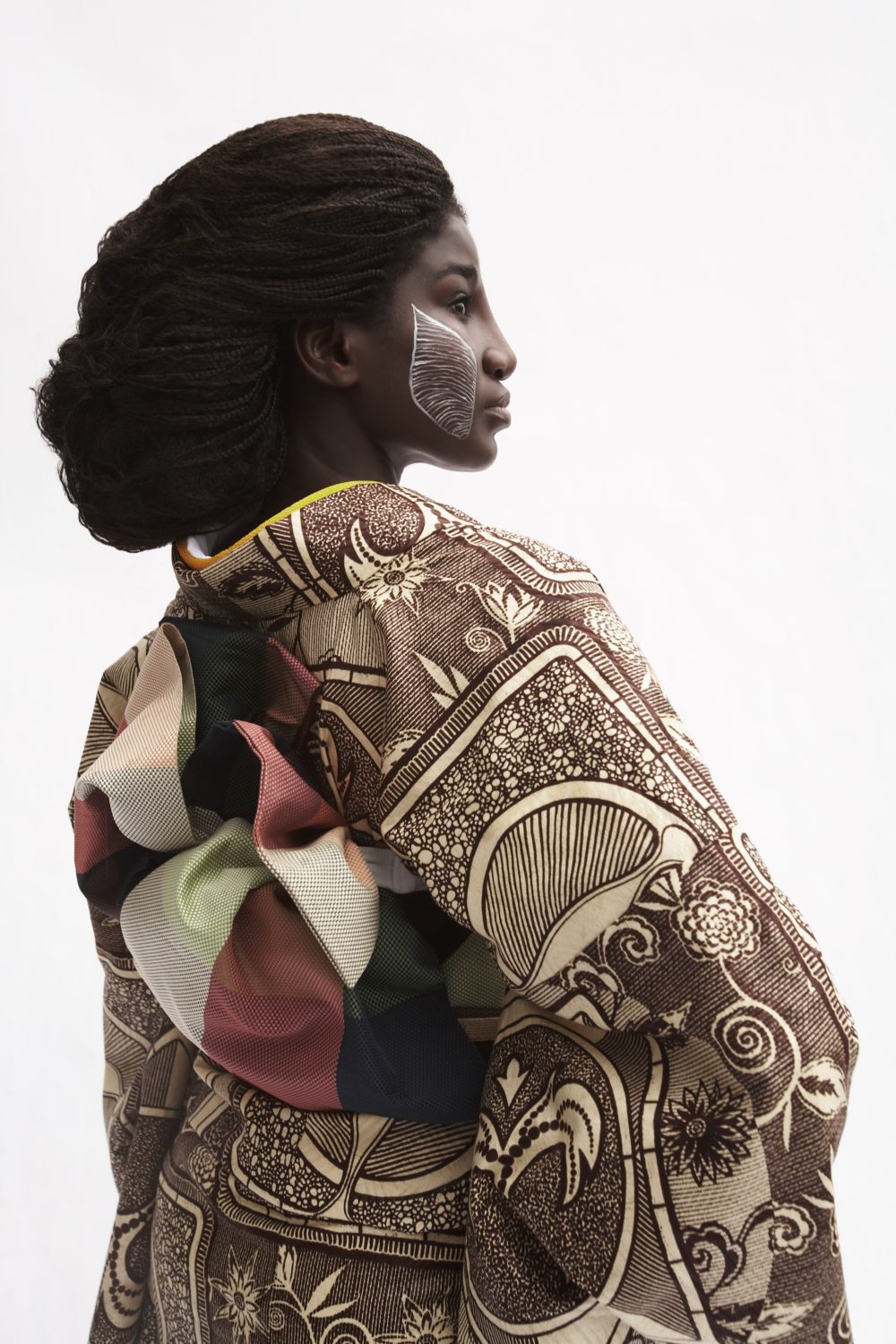
Among the many other sensuous experiences, people were queuing up for the exhibition Blossoming Beauties with glass art and fragrant flower arrangements, and tea was being served in the middle of the furniture exhibition. The exhibition that came closest to the body was Genealogies of Ornament, which explored the global exchange of decorative elements in clothes, jewellery and watches: kimonos with African wax prints and a Van Cleef necklace that fuses a zip with Indian lotus patterns.
The next big step for the Michelangelo Foundation will be to expand its activities to include the whole planet, and it would be no surprise if the theme for 2024 is globalized craft.
Homo Faber was held on the Venetian island of San Giorgio from 10 April to 1 May. The digital catalogue can be accessed here

